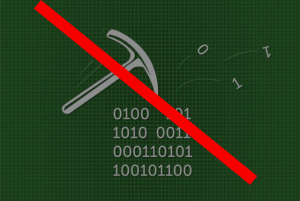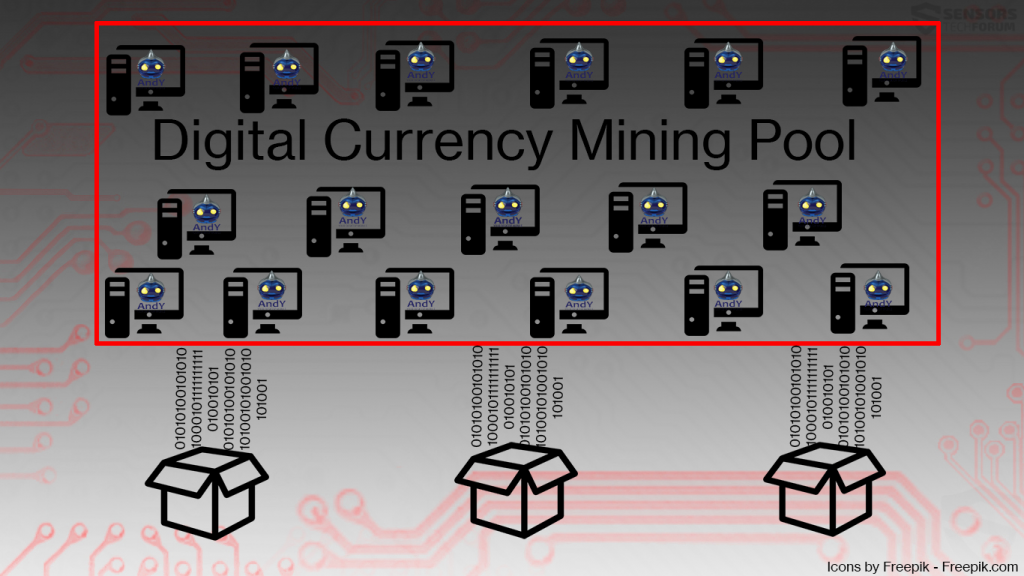 This blog post has been created to best explain what is the Winlog.exe Miner malware and how you can remove it completely from your computer.
This blog post has been created to best explain what is the Winlog.exe Miner malware and how you can remove it completely from your computer.
A new miner virus using the Winlog.exe process to mine computer has been detected by security researchers. The miner attacks the Central Processor of computers, compromised by it and strives to obtain various different information from infected computers while doing mining activities. In the events that your computer is infected by the Winlog.exe miner, read this article to learn more about it and how you can remove it’s files.

Threat Summary
| Name | Winlog.exe |
| Type | Miner Trojan |
| Short Description | May attack the CPU on your computer to perform cryptocurrency mining activities. |
| Symptoms | Your computer may begin to experience general slowing down of performance and you might see high CPU usage in task manager. |
| Distribution Method | Via malicious files or links sent to the victim or other malware. |
| Detection Tool |
See If Your System Has Been Affected by malware
Download
Malware Removal Tool
|
User Experience | Join Our Forum to Discuss Winlog.exe. |

Winlog.exe Crypto Miner – How Does It Infect
The main infection methods that are related to the Winlog.exe malware were recently reported by security researchers to be conducted as a result of various different types of attack methods. One of them is by you having a potentially unwanted program added on your computer. These programs may be adware or browser hijackers tht may cause browser redirects to unsafe sites. Only one unsafe site, containing the infection file or script of the Winlog.exe coin miner is enough to compromise your computer system.
Another way of infecting you is by you downloading the malicious file yourself, while trusting that it is a legitimate type of file. These seemingly legitimate files often tend to run various different types of malicious scripts on your computer. These scripts result in a successful infection with Winlog.exe malware on your computer.

Winlog.exe Miner – Activity
When an infection with Winlog.exe miner takes place on your compute,r the malware may begin to activate the following Windows processes:
- Winlog.exe
- Cmd.exe*32
- Timeout.exe
As soon as this miner is activated, your CPU usage may immediately spike. Other side effects of the malware may also include:
- The Winlog.exe process dropped in the %ProgramData% Windows directory.
- The timeout.exe process running in Task manager.
- CMD.exe*32 also running in Windows Task Manager.
- Programs start with big delay.
- The computer freezes at times.
To mine for cryptocurrencies, Winlog.exe may connect to a mining pool, which is a virtual space, where multiple mining computers are connected and generate hashes as shown in the image below:
The Winlog.exe miner targets the Electroneum crypto currency in the background of your computer and you get nothing in return. This is a relatively new crypto and at the expense of your CPU’s usage, the cyber-criminals receive Electroneum tokens. The worse part of it all is that the Winlog.exe miner may even damage your computer due to overheating if the virus remains on your computer for long periods of time.
In addition to this, the Winlog.exe miner may also have some Trojan horse components embedded directly into the virus. This may make it particularly dangerous to your PC, since the miner may perform the following malicious activities:
- Delete files.
- Copy files from your PC.
- Encrypt files on your PC.
- Obtain administrator rights.
- Update itself so that it stays hidden.
- Log the keystrokes typed by you.
- Obtain data about the sites you have visited.
- Steal saved passwords on your browser.
- Steal financial data.

Remove Winlog.exe Miner Trojan from Your PC
If you want to remove the Winlog.exe cryptocurrency miner malware, your best bet is to follow the manual or automatic removal instructions underneath this article. They have been created with the primary idea to help you delete the files belonging to this virus either by hand or automatically. If manual removal does not seem to work for you, we would suggest that you remove this malware automatically from your PC. Experts always recommend such removal to be done with the aid of an advanced anti-malware program, since such software will scan your computer for all the malicious objects and files created by the Winlog.exe miner and remove it. More to it, such software also makes sure that your computer remains protected against any malicious files in the future as well.
Preparation before removing Winlog.exe.
Before starting the actual removal process, we recommend that you do the following preparation steps.
- Make sure you have these instructions always open and in front of your eyes.
- Do a backup of all of your files, even if they could be damaged. You should back up your data with a cloud backup solution and insure your files against any type of loss, even from the most severe threats.
- Be patient as this could take a while.
- Scan for Malware
- Fix Registries
- Remove Virus Files
Step 1: Scan for Winlog.exe with SpyHunter Anti-Malware Tool



Step 2: Clean any registries, created by Winlog.exe on your computer.
The usually targeted registries of Windows machines are the following:
- HKEY_LOCAL_MACHINE\Software\Microsoft\Windows\CurrentVersion\Run
- HKEY_CURRENT_USER\Software\Microsoft\Windows\CurrentVersion\Run
- HKEY_LOCAL_MACHINE\Software\Microsoft\Windows\CurrentVersion\RunOnce
- HKEY_CURRENT_USER\Software\Microsoft\Windows\CurrentVersion\RunOnce
You can access them by opening the Windows registry editor and deleting any values, created by Winlog.exe there. This can happen by following the steps underneath:


 Tip: To find a virus-created value, you can right-click on it and click "Modify" to see which file it is set to run. If this is the virus file location, remove the value.
Tip: To find a virus-created value, you can right-click on it and click "Modify" to see which file it is set to run. If this is the virus file location, remove the value.Step 3: Find virus files created by Winlog.exe on your PC.
1.For Windows 8, 8.1 and 10.
For Newer Windows Operating Systems
1: On your keyboard press + R and write explorer.exe in the Run text box and then click on the Ok button.

2: Click on your PC from the quick access bar. This is usually an icon with a monitor and its name is either “My Computer”, “My PC” or “This PC” or whatever you have named it.

3: Navigate to the search box in the top-right of your PC's screen and type “fileextension:” and after which type the file extension. If you are looking for malicious executables, an example may be "fileextension:exe". After doing that, leave a space and type the file name you believe the malware has created. Here is how it may appear if your file has been found:

N.B. We recommend to wait for the green loading bar in the navigation box to fill up in case the PC is looking for the file and hasn't found it yet.
2.For Windows XP, Vista, and 7.
For Older Windows Operating Systems
In older Windows OS's the conventional approach should be the effective one:
1: Click on the Start Menu icon (usually on your bottom-left) and then choose the Search preference.

2: After the search window appears, choose More Advanced Options from the search assistant box. Another way is by clicking on All Files and Folders.

3: After that type the name of the file you are looking for and click on the Search button. This might take some time after which results will appear. If you have found the malicious file, you may copy or open its location by right-clicking on it.
Now you should be able to discover any file on Windows as long as it is on your hard drive and is not concealed via special software.
Winlog.exe FAQ
What Does Winlog.exe Trojan Do?
The Winlog.exe Trojan is a malicious computer program designed to disrupt, damage, or gain unauthorized access to a computer system. It can be used to steal sensitive data, gain control over a system, or launch other malicious activities.
Can Trojans Steal Passwords?
Yes, Trojans, like Winlog.exe, can steal passwords. These malicious programs are designed to gain access to a user's computer, spy on victims and steal sensitive information such as banking details and passwords.
Can Winlog.exe Trojan Hide Itself?
Yes, it can. A Trojan can use various techniques to mask itself, including rootkits, encryption, and obfuscation, to hide from security scanners and evade detection.
Can a Trojan be Removed by Factory Reset?
Yes, a Trojan can be removed by factory resetting your device. This is because it will restore the device to its original state, eliminating any malicious software that may have been installed. Bear in mind that there are more sophisticated Trojans that leave backdoors and reinfect even after a factory reset.
Can Winlog.exe Trojan Infect WiFi?
Yes, it is possible for a Trojan to infect WiFi networks. When a user connects to the infected network, the Trojan can spread to other connected devices and can access sensitive information on the network.
Can Trojans Be Deleted?
Yes, Trojans can be deleted. This is typically done by running a powerful anti-virus or anti-malware program that is designed to detect and remove malicious files. In some cases, manual deletion of the Trojan may also be necessary.
Can Trojans Steal Files?
Yes, Trojans can steal files if they are installed on a computer. This is done by allowing the malware author or user to gain access to the computer and then steal the files stored on it.
Which Anti-Malware Can Remove Trojans?
Anti-malware programs such as SpyHunter are capable of scanning for and removing Trojans from your computer. It is important to keep your anti-malware up to date and regularly scan your system for any malicious software.
Can Trojans Infect USB?
Yes, Trojans can infect USB devices. USB Trojans typically spread through malicious files downloaded from the internet or shared via email, allowing the hacker to gain access to a user's confidential data.
About the Winlog.exe Research
The content we publish on SensorsTechForum.com, this Winlog.exe how-to removal guide included, is the outcome of extensive research, hard work and our team’s devotion to help you remove the specific trojan problem.
How did we conduct the research on Winlog.exe?
Please note that our research is based on an independent investigation. We are in contact with independent security researchers, thanks to which we receive daily updates on the latest malware definitions, including the various types of trojans (backdoor, downloader, infostealer, ransom, etc.)
Furthermore, the research behind the Winlog.exe threat is backed with VirusTotal.
To better understand the threat posed by trojans, please refer to the following articles which provide knowledgeable details.



